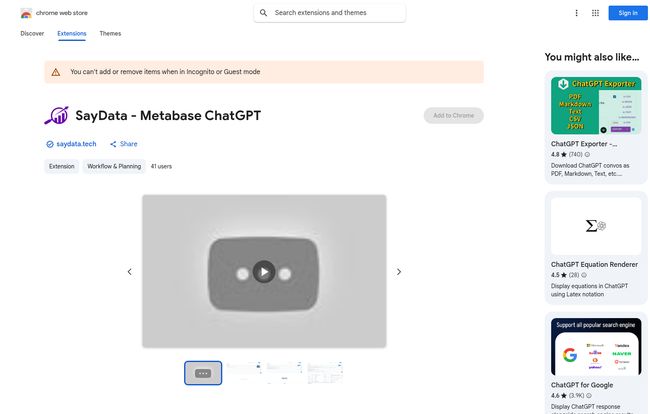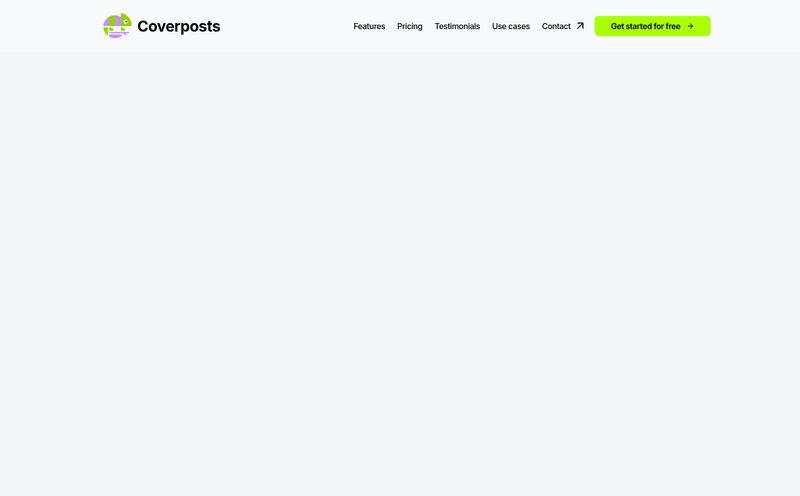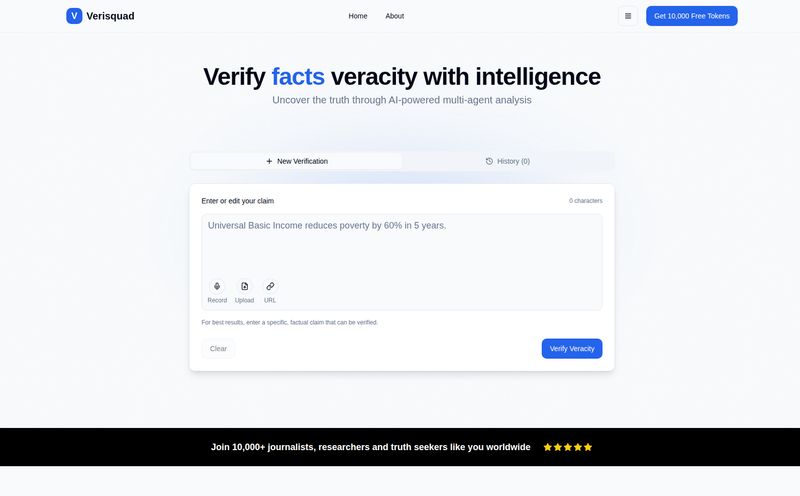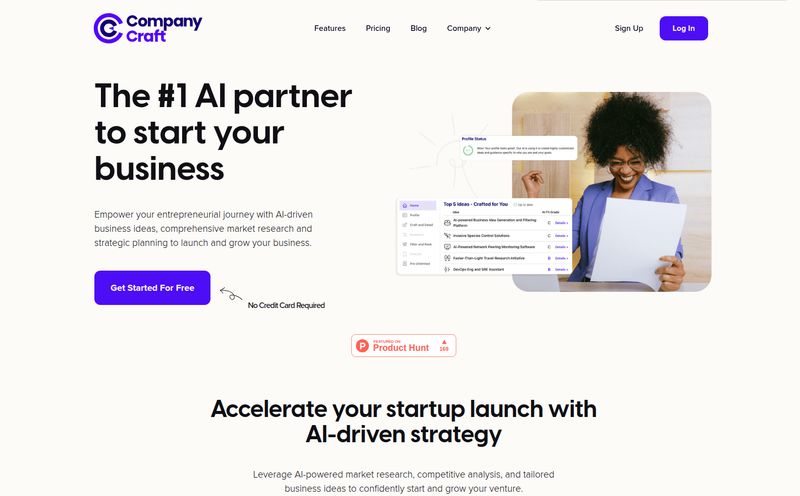I swear, if I have to file one more ticket with the engineering team just to get a simple data pull, I might just lose it. We’ve all been there, right? You need to know which feature your customers actually use, not just the one they talk about. But that data is locked away in a digital fortress, and the only person with the key is a developer who’s already swamped with a two-week sprint. It’s a bottleneck. It’s frustrating. And frankly, it’s a colossal waste of time.
For years, the industry has been buzzing about the “democratization of data.” A lovely idea. But most business intelligence (BI) tools are still clunky, requiring a PhD in SQL or the patience of a saint to build a decent dashboard. So when I stumbled upon a tool called SayData, my curiosity was definitely piqued. It promises something different: AI-powered analytics that you can talk to. In plain English.
Is this the tool that finally breaks down the walls of that data fortress? Or just another shiny object in the ever-expanding universe of SaaS? Let's get into it.
So, What on Earth is SayData?
At its heart, SayData aims to be a universal translator for your company's data. It’s not just another platform for building static dashboards that no one looks at after week one. Instead, it’s designed to be embedded directly into your own app or website, giving your customers—yes, your actual paying users—the power to ask questions about their own data.
Think about that for a second. Instead of you having to build a dozen different report variations for your clients, they can just… ask. “Show me my team’s performance this quarter compared to last.” or “Which of my campaigns had the best ROI in May?” That’s the core promise. It's less of a rigid report and more of a conversation.
From what I can gather, their approach is twofold:
- Customer-Facing Analytics: The embedded tool that lets your users become their own data analysts.
- AI Employees: Out-of-the-box AI agents that can be integrated with your internal teams to automate processes. More on this sci-fi sounding concept in a bit.
Putting Analytics Directly in the Customer's Hands
Why This is a Bigger Deal Than It Sounds
Okay, so letting customers run their own reports is cool. But why does it really matter? In my experience, it’s all about product stickiness. When a user can easily get valuable, personalized insights from your platform, your platform becomes indispensable. It’s no longer just a tool they use; it’s the brain of their operation. This reduces churn, cuts down on support tickets asking for custom reports and empowers your users in a way that builds incredible loyalty.
The "Plain English" Magic Trick
The secret sauce here is the natural language processing. The idea that a non-technical person can get complex answers without writing a single line of code is, well, the holy grail for a lot of businesses. We've all gotten used to this with ChatGPT, asking it to write an email or explain a concept. SayData wants to bring that same conversational ease to your proprietary data.
I saw they have a Chrome Extension for Metabase, which is a pretty smart move. For those who don't know, Metabase is a popular open-source BI tool. This extension basically layers SayData's ChatGPT-like interface over it, letting you query your Metabase data without getting your hands dirty with its query builder. It’s a great proof of concept for their whole philosophy.

Visit SayData
Okay, But What Are 'AI Employees'?
This is where things get a little more futuristic. The term “AI employees” sounds like something out of Blade Runner, and I’m half expecting to hire a replicant to manage my CPC campaigns. The reality is probably a bit more grounded, but still very powerful.
Think of them as highly specialized, automated agents. Instead of a general-purpose chatbot, you might have an “AI Financial Analyst” that constantly monitors cash flow and flags anomalies. Or an “AI Customer Success Agent” that proactively identifies users whose behavior patterns suggest they might be at risk of churning, then alerts a human team member to reach out. It's about moving from reactive data pulling to proactive, automated insight generation. It's an ambitious idea, and honestly, the part of their offering I'm most curious to see in action.
The Good, The Bad, and The Big Question Mark
No tool is perfect, and I’m always skeptical of anyone who claims theirs is. Based on the info out there and my own industry experience, here's my breakdown of SayData.
The Advantages of SayData
The big win here is customer self-service. Handing the keys to your customers is a power move. It fosters independence and makes your product feel like a true partner. The potential to automate business processes with those AI employees is also huge, freeing up human brainpower for strategy instead of repetitive analysis. And the promise of integrating with existing systems is critical—no one wants to rip and replace their entire tech stack. They want a tool that plays nice with others.
Potential Roadblocks
Let's be realistic. A tool this powerful won't just work by clicking an 'on' switch. There's going to be an initial setup and integration effort. You'll need to connect your data sources correctly and ensure the AI understands your specific data schema. That takes work. Also, and this is a big one for any AI tool, it will absolutely require human oversight. AIs can misinterpret things or “hallucinate” facts. You can't just let it run the show without a human in the loop to sanity-check its insights. This isn't a flaw of SayData specifically, but the current state of AI in general.
The Million-Dollar Question: What's the Price?
And now we get to the part everyone's looking for. The pricing. Which is... nowhere to be found. A classic B2B SaaS move. The lack of a public pricing page tells me a few things. First, this is not a tool for the casual blogger or small ecommerce shop. This is an enterprise-grade solution. Second, pricing is likely customized based on things like data volume, the number of end-users, and which modules (like the AI employees) you need. You're going to have to get on a call with a sales rep. While I always prefer transparent pricing, this approach is pretty standard for platforms aiming at the mid-market and enterprise level. Don't expect a simple $49/month plan.
So, Who Is This Really For?
After digging in, a clear picture of the ideal SayData customer emerges:
- SaaS Companies: Any software-as-a-service business that collects a ton of user data could use this as a premium feature. Imagine selling an analytics add-on that lets your customers talk to their own data. That's a powerful differentiator.
- Large Enterprises: Companies with siloed departments and complex data warehouses could use this to give business teams (like marketing, sales, or operations) direct access to data without bogging down the IT or data science teams.
It’s probably not for the solopreneur or small business whose analytics needs are well-served by Google Analytics and a simple spreadsheet. This is for when your data's scale and complexity have outgrown the basic tools.
My Final Take on SayData
So, is SayData the messiah of data analytics we've been waiting for? Maybe. The idea is absolutely on the money. The entire industry is shifting away from gatekept data and towards embedded, intelligent tools. SayData is riding that wave perfectly.
The success will all come down to execution. How good is the natural language understanding? How truly “seamless” is the integration? How smart are those AI employees? Without a hands-on demo, it's hard to say for sure. But I’m cautiously optimistic. For the right company—one with a real need to empower its users and a budget to match—this could be a transformative investment, turning data from a frustrating chore into a genuine competitive advantage.
Frequently Asked Questions about SayData
What is SayData in simple terms?
Think of it as a smart assistant like ChatGPT, but for your company's or your app's specific data. It lets you and your customers ask questions in plain English to get insights, charts, and reports without needing to code.
Do I need to know how to code to use SayData?
For the end-user, absolutely not. That's the whole point! You ask questions in English. However, setting it up and integrating it into your product will likely require some technical know-how from your development team.
Is SayData just for big companies?
Based on its features and lack of public pricing, it appears to be targeted at mid-to-large sized businesses and SaaS companies, rather than individuals or very small businesses. Its power lies in handling complex data ecosystems.
How is this different from Tableau or Power BI?
While tools like Tableau and Power BI are powerful for creating detailed dashboards, they are typically used by trained analysts. SayData focuses on conversational, on-the-fly queries from non-technical users and is designed to be embedded within another application, making it part of the user experience.
What are 'AI Employees' in SayData?
They are specialized AI agents designed to automate specific business tasks. For example, an AI agent could monitor sales data for trends or analyze customer support tickets for recurring issues, acting as an automated member of your team.
Is the SayData Chrome Extension free?
The "SayData - Metabase ChatGPT" extension listed on the Chrome Web Store appears to be free to install. It serves as an add-on to an existing Metabase installation, showcasing the platform's natural language capabilities.
Conclusion
The journey from raw data to actionable insight is often a long and painful one. Tools like SayData are trying to build a much-needed shortcut. By focusing on conversational queries and embedding analytics where users already are, they are tackling a genuine pain point in the market. While the mysterious pricing and the need for human oversight are real considerations, the direction SayData is heading is undoubtedly the future of how we'll all interact with data. It's one to watch, for sure.
Reference and Sources
- SayData Official Website
- SayData - Metabase ChatGPT on Chrome Web Store
- Metabase - Open Source Business Intelligence



